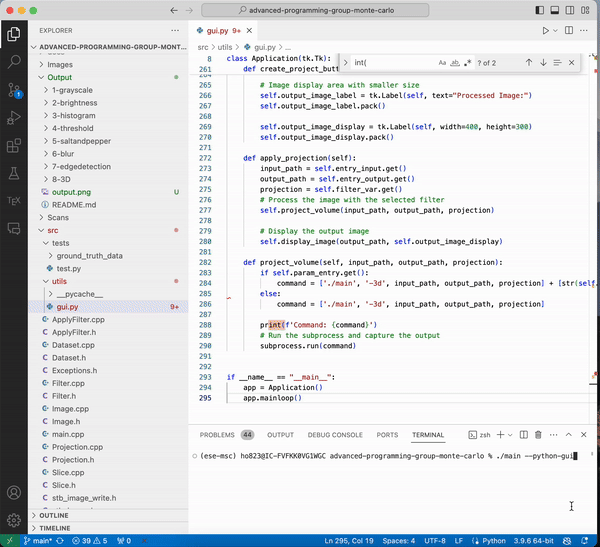Image and Volume Processing Library
In my Advanced Programming class at Imperial, I worked on a group project with 4 other students. Our goal was to develop a C++ library that could process images and volumes with a user-friendly Python-based GUI.
My contribution was to create and optimise Image and Volume classes and implement volume processing functions, such as three-dimensional blurs and projections. Throughout the week, I guided the team in effectively using GitHub: managing the repository, creating issues and branches, committing, pushing, creating pull requests, resolving merge conflicts, and conducting code reviews.
Image Processing Video

Volume Processing Video

UML Diagram

An abstract Dataset is created as a base class. Volume and Image classes inherit the same data members; copy, move constructors; copy, move assignment operators while overwriting Read.
- Copy and move operators are defined to prevent memory leaks and optimise speed and memory usage.
- All pixel data is stored in a one-dimensional array (
unsigned char*) for both volumes and images. - Get and Set functions are defined to enable easy access to any pixel from its location x,y,z.
Data Storing Mechanism

Three methods are tried to decide on how to store data of volumes.
- My first idea was to store the pointers to image objects in a
std::vectorcontainer. But this method is slow because when we try to access a pixel value, we need to go through one more step. - Storing all values in a simple one dimensional array gave the best results. It provided 20% increase in speed of all functions due its better memory access times.
- I also considered storing all of the data in a
std:vectorcontainer thinking that a special container might give better access times. But it was slower than a simple one dimensional array. I believe the reason is thatstd::vectorhas so many features we don’t use which provide overhead. For instance, we don’t need to resize the data once we read it. So, we don’t need operators such as.push_back()which vector container provides. Thus,unsigned char*is the best way of storing data.
